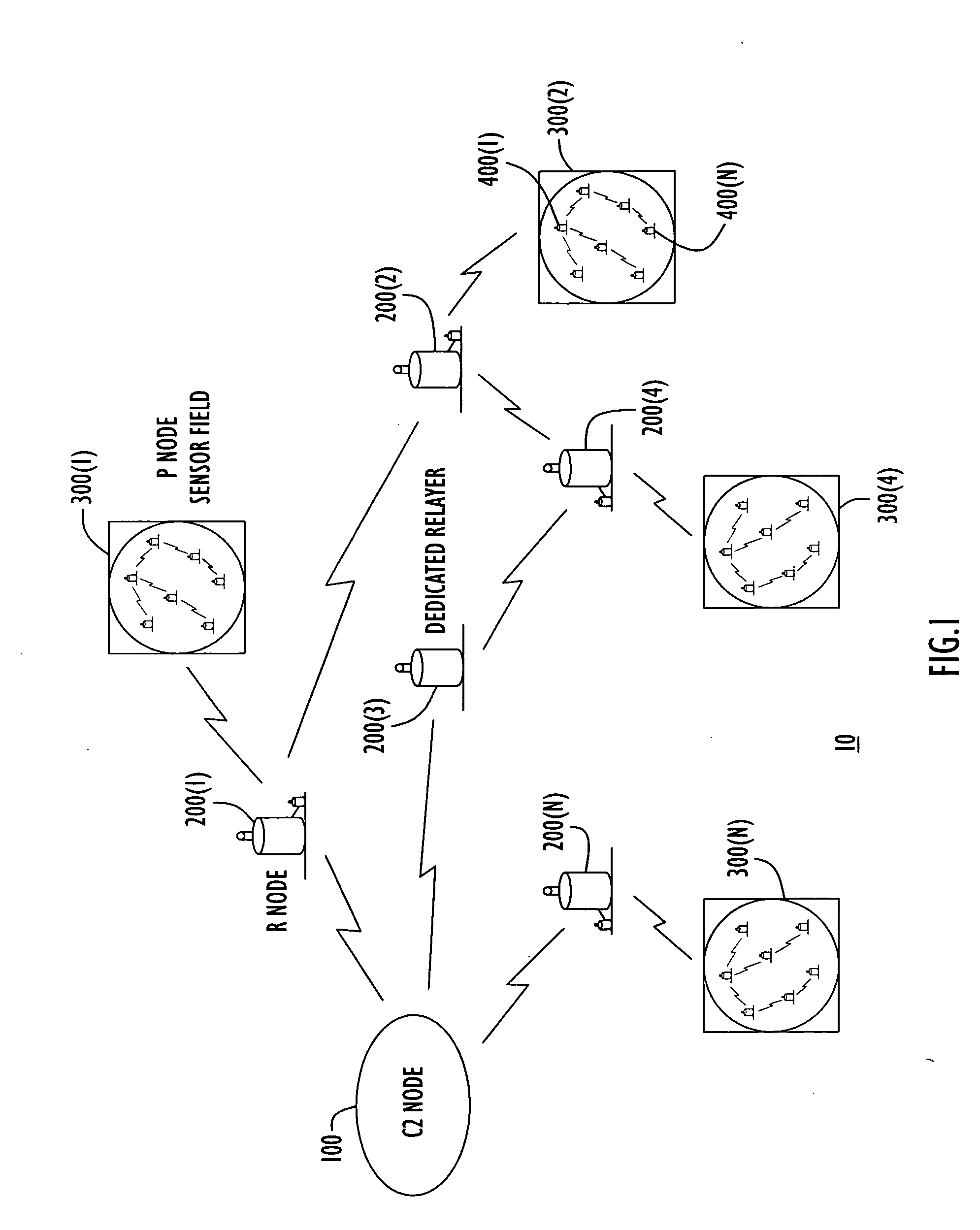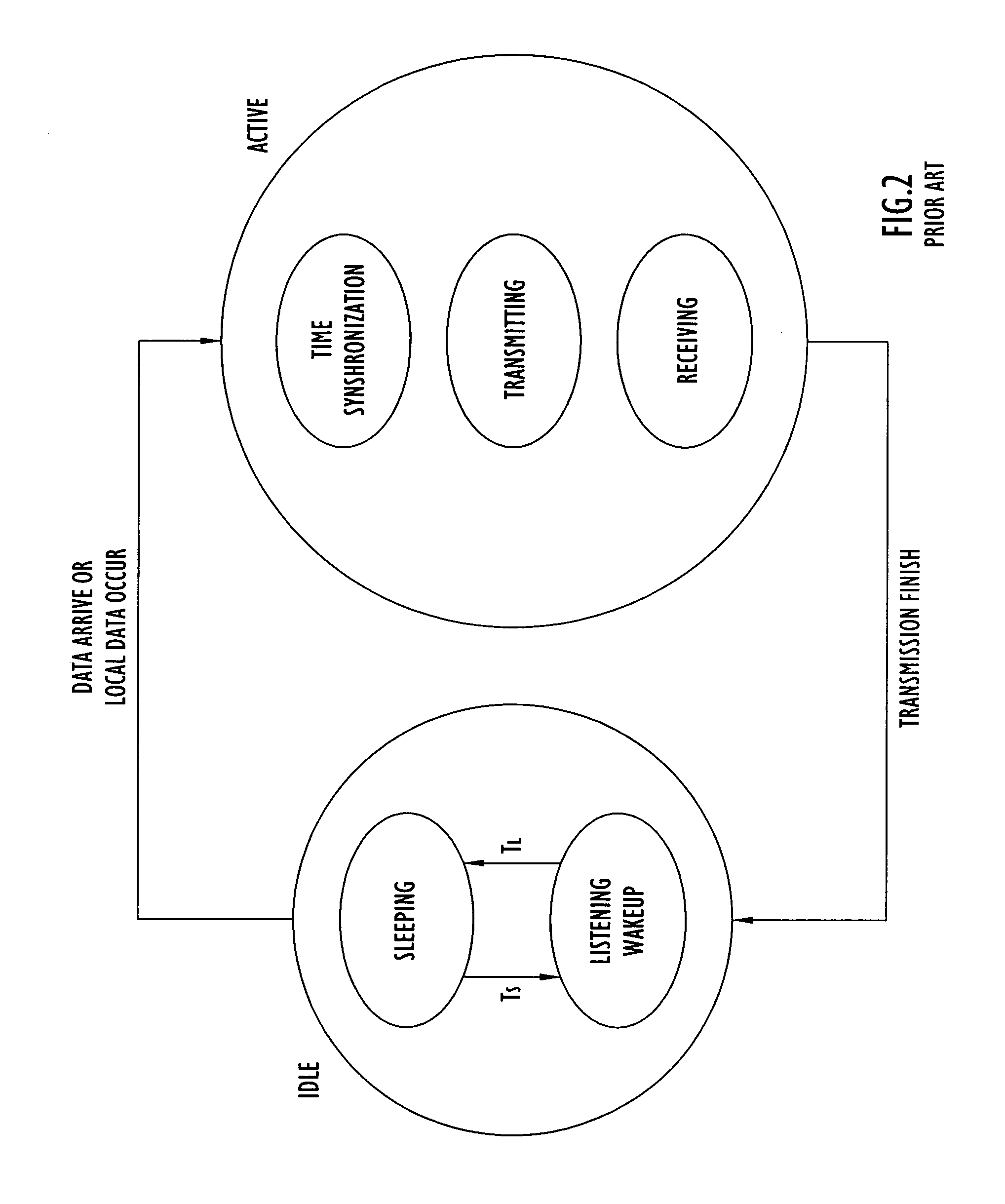Energy-efficient medium access control protocol and system for sensor networks
a sensor network and access control technology, applied in data switching networks, high-level techniques, synchronisation arrangements, etc., can solve the problems of high energy-intensive sensor network management, low scalability of contention-based protocols, and high cost of channel allocation among nodes. , to achieve the effect of increasing the battery life of remote wireless nodes, fast time synchronization, and increasing processing gain
- Summary
- Abstract
- Description
- Claims
- Application Information
AI Technical Summary
Benefits of technology
Problems solved by technology
Method used
Image
Examples
example scenario
[0106] Example Scenario
[0107] In this example, it is assumed that the R3 node has a higher battery power than the R1 node. The efficiency and robustness of the MAC protocol is compared against the conventional approach for the UGS network. All other nodes, except nodes R1 and R3, are assumed to have equal battery power for simplicity of the analysis. According to the conventional MAC protocol, node R1 receives the wakeup signal from the C2 node, which it rebroadcasts to nodes R2 and R4. More bits in the wakeup signal from the C2 node increase the process gain (PG), thereby increasing the probability to reach node R2. For example, two conventional C2 bit patterns (each 512 bits) may be combined to make the C2 waveform (1024 bits) and the wakeup detector is integrated and summed to improve the full process gain of 3 dB. After node R2 is awake, it switches the antenna to listen to any LNE message as shown in FIG. 8B. The received LNE(s) at node R2 could be generated from nodes R1 or R3...
PUM
 Login to View More
Login to View More Abstract
Description
Claims
Application Information
 Login to View More
Login to View More - R&D
- Intellectual Property
- Life Sciences
- Materials
- Tech Scout
- Unparalleled Data Quality
- Higher Quality Content
- 60% Fewer Hallucinations
Browse by: Latest US Patents, China's latest patents, Technical Efficacy Thesaurus, Application Domain, Technology Topic, Popular Technical Reports.
© 2025 PatSnap. All rights reserved.Legal|Privacy policy|Modern Slavery Act Transparency Statement|Sitemap|About US| Contact US: help@patsnap.com



